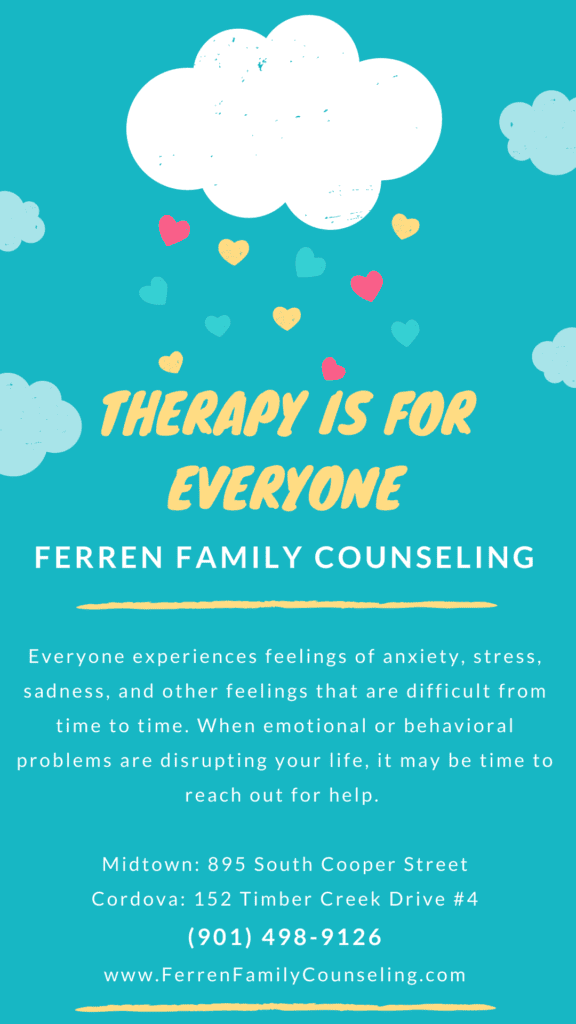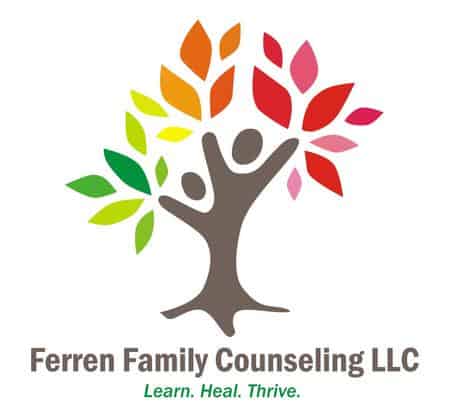When most people think of therapy, they probably think of traditional psychotherapy, which typically consists of talk therapy. However, there are many different types of therapy, with some having unique benefits in the healing process. And one in particular that many people might not know about is the use of art in therapy.
At Ferren Family Counseling, we offer a multitude of different interventions within our therapy, including the use of art. Our motto is, ‘learn, heal, thrive’ and the use of expressive art is a great tool to help learn oneself, heal from past hurts, and flourish. Our trauma-informed, client-centered approach puts a client’s healing front and center.
There is a difference between art therapy and art in therapy. Art therapy requires extensive training and credentialing by a master level professional. For a list of mental health professionals who are registered art therapists, please visit the Art Therapy Credentialing Board at www.atcb.org. Art therapy has been around for almost 80 years. The theory behind it is reasonably straightforward. People who might be struggling with their mental health might be struggling to express themselves with words.
Art therapy offers a creative outlet for their expression. Some people might wonder what form of art is best, but the truth is it depends on the individual. The use of art in therapy can consist of photography, sculpting, painting, drawing, collages, or simply random doodles. As mental illness is unique to each person who lives with it, the best treatment will be very personalized as well. The benefits can be hard to ignore though, as art in therapy offers benefits to a wide range of mental health conditions, including depression, anxiety, eating disorders, family trauma, substance use disorders, and more.
One of the reasons it works, besides offering an outlet for expression, is that it helps an individual be present. Often, mental illness can cause someone to dwell on the past or catastrophize about the future. Yet when working on art, there is a tangible thing that is right in front of you, reminding you to be present. The outlet provided can also help with impulse control and emotional regulation because it reengages the ‘thinking’ part of the brain (the frontal cortex), as opposed to letting emotions trigger fight-or-flight responses in the lower, more instinctual part of the brain.
Another benefit that is provided by art in therapy is additional insight and understanding of an individual’s thought processes, an understanding that might not emerge through talk therapy alone. Perhaps the color schemes selected by an individual, or a particular image or symbol, will offer unique insights that are invaluable to the therapeutic process.
As we mentioned, Ferren Family Counseling is committed to providing a client-centered experience that determines the right therapeutic approach and helps a client learn, heal, and thrive. And if you think that art in therapy might help you do that, reach out to our office to schedule a consultation or appointment or we can assist in locating a provider registered in art therapy. We will be happy to answer any questions about how we can assist you in your healing journey.
Jennifer Ferren, LPC-MHSP, ACS
Owner/ Therapist
Ferren Family Counseling
895 S Cooper
Memphis, TN 38104
901-498-9126
www.FerrenFamilyCounseling.com




